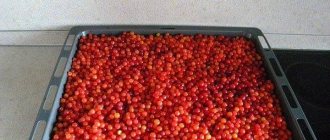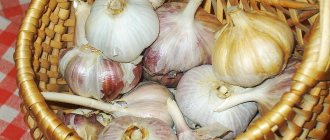Tulip is a perennial plant, the most important ornamental crop on the planet, both for amateur flower growers and for commercial structures . These are daytime flowers that open their buds in the sun and “hide” when night or bad weather sets in.
Many women love to receive tulips as a gift in the form of a bouquet or even with bulbs. those who prefer to garden often have these bright and not too fancy flowers in their garden.
Factors affecting the shelf life of tulips
- Life cycle of a plant at the time of cutting.
- Time of day for cutting (recommended - in the morning, before watering and opening of the bud).
- Cooling rate (after transportation).
- Room temperature.
- The quality of the water in which the flowers stand.
- When stored without water, use the material used to wrap the bouquets.
- The level of ethylene concentration in the air (flowers themselves emit it - this issue can be solved by high-quality ventilation).
- The likelihood of putrefactive processes occurring (can be eliminated by adding vinegar (1 tsp/1 liter of water), aspirin (1 tablet/1 liter of water), a solution of potassium permanganate (a few drops), a piece of activated carbon to the water).
- Neighborhood with other colors (not allowed).
- Direct sunlight (not allowed).
- Nature of the soil (for plants with bulbs).
- Pest protection factor.
Apartment
You can store the roots in your apartment until spring, subject to a number of conditions:
- The container with tubers should be deprived of light. In nature, in winter they are in the ground, breaking the rules is harmful to the plant.
- Room temperature up to 15 degrees. Finding such a place in an apartment is problematic. Therefore, common corridors, specially equipped storage rooms or an insulated balcony are better suited.
- Humidity is 60-70%; if there is no hygrometer, this can be determined by the appearance of the bulb. The surface is smooth, shiny, sufficient density, not wrinkled, not flaccid - this means that everything is in order.
Storing tulip bulbs
The tulip bulb can overwinter in the ground , but it is recommended to remove it from the ground for the winter, as it divides and ages, “babies” appear, they do not have enough space and clean soil. Flowers degenerate and lose their marketable appearance.
Digging is done a month after flowering (when most of the leaves and stem are yellow), carefully so as not to cause damage. They are dried for a week, avoiding direct sunlight. The material is placed in boxes (cardboard boxes are not suitable - there is no air circulation, and paper tends to become damp), therefore, it is better to use wooden ones. The bulbs are cleaned of roots, excess husks, rot, spoiled ones are removed and laid in 1-2 layers , sprinkled with sawdust. Rotting can be prevented by treating the material with a solution of sodium permanganate or contact fungicides.
There are requirements for room temperature and humidity. The first three weeks the air should be warm: 25-30 °C , then the temperature is gradually reduced to 15-20 °C . Humidity varies in the range of 60-70% . Even if these conditions are met, it is necessary to check for spoiled material. Storing tulip bulbs in refrigerators is prohibited - they will retain their exceptional appearance, but will not be suitable for growing.
The rules for storing bulbs brought from Holland are identical to those above. It is worth paying attention to timely planting in the ground , avoiding violations of the regime due to long transportation.
In temperate climates, the storage period for bulbs is 8 months (from digging in July to planting in March). This time may vary by 2-4 weeks, taking into account the condition of the plants after shedding their petals.
If the bulbs are planted and grown in pots, then they must be placed in conditions with a constant temperature of 7-13 ° C , which will provide the plants with peace before spring flowering. In spring, the pots need to be moved closer to sunlight or the tulips should be planted in the ground. Ambient temperature – from 16 to 21 °C . After 1-3 weeks (depending on the variety), buds will begin to form.
Bulbs are the only possible option for winter storage of these plants, because... cut flowers do not have such long viability.
When to dig up bulbs
After a tulip blooms, its bulb ripens for some time in the upper layers of the earth, and then goes deeper until the weather warms. This behavior is the overwintering of the plant in natural conditions.
In cold climates, bulbs cannot be stored for long because they become thinner and smaller over time. In order to prevent this, they are dug up immediately after flowering. This is usually done with rare varieties. Regular types of tulips can be dug up within a month after the plant has finished blooming. During this time, the bulb just has time to ripen, the excess part of the leaves fades, and the base loses turgor.
Interesting! There is an opinion among gardeners: if you can wrap a tulip stem around your finger, then the plant is ready to be dug up.
You should not keep the bulb in the ground for a long time, since during this time small plants can go deep into the soil, and it will be very difficult to pull them out. Such a blind search leads to injury to the plant. The digging itself is best done in dry weather. The air temperature should be comfortable: about 20 degrees.
Dry storage of cut tulips
Cut flowers, collected in piles of 10-15 pieces , are packed in pre-moistened paper. They need to be collected together with such density that there is not a lot of space, but each bud must be free from contact with the neighboring one. The finished bundles can be loosely stacked on shelves or in boxes in a cool room or refrigerator. If the buds are not yet open and uncolored, then the boxes are closed.
Optimal conditions for cut flowers will be an air temperature of 0 +3 ° C and a humidity of 97% . These settings will ensure storage for 2 weeks . The buds will open as soon as the flowers fall into the water. They must be “watered off” 5 hours before sale. Tulips should not be allowed to be adjacent to fruits and vegetables.
How and with what to do it
It’s not enough to just buy a bouquet and feed it properly. You also need to trim the stems. It's quite simple, but requires a little trickery. Firstly, cut the stems only in water. This prevents the entry of air, which means that no pathogenic or destructive bacteria will develop. Secondly, the stems are cut obliquely, and not along a straight path. This will not greatly disturb the structure, and it will be easier for nutrients from the water to enter inside. How to store cut tulips at home for as long as possible? Trim the stems a little every day. Thus, they will not become clogged and will continue to feed, which will allow them to remain fresh for a long time, as if they had just been cut from a flower bed.
Storing cut tulips using a wet method
With this storage method (in water), several requirements must be observed that directly affect the quality of the floral material:
| № | Factor | Influence |
| 1 | Oblique cut of the stem | Increasing the area capable of absorbing water (the cut should have a length of 1 to 2 cm). |
| 2 | Update a slice | Daily renewal of the cut (simultaneously with changing the water) will prolong the life of the tulips, because they continue to grow without soil. |
| 3 | Water temperature (cool) | Preventing the growth of bacteria and premature opening of the bud. The temperature should be around 18° C. In summer, pieces of ice can be added to achieve this level. |
| 4 | Freshness of water | Daily change of water in the vessel prevents it from stagnating, which contributes to the progression of microorganisms. Every time you change the fluid, you need to wash the vessel. |
| 5 | Availability of nutrients in water | Adding sugar-containing solutions increases the lifespan of flowers. |
| 6 | Air temperature and lighting | In a dark room with a temperature of +2° C and in cold water, tulips will last 10-15 days. During this time, they can be withdrawn for sale at any time. The buds will begin to open as soon as they have access to heat and light. |
Why do flowers fade
Before storing cut tulips at home, you need to understand why they do not “die” immediately after cutting. Flowers are living plants because they eat, breathe and grow through their root system. Once they are deprived of it, access to the nutrients that keep them alive is cut off. Because of this, withering occurs. However, there are some tricks that allow plants to feed and stay fresh for some time, even without a root system. Many women know about these tricks and actively use them. And this allows them to admire the flowers for a long time. Therefore, before storing cut tulips brought from the store (not those grown in your own garden), it is worth familiarizing yourself with some tricks.
Transportation of tulips in vehicles
Transportation of flowers requires compliance with certain conditions. The car must be kept cool and temperature fluctuations are not allowed. The bouquets are wrapped in wax paper, tied with twine and laid loosely. A bar is placed on top at a distance on which a new layer of bouquets can be laid out.
Tulips are stored in boxes larger than the stems to allow them to grow. If there is a need to sell tulips directly from the car, this can be done by preventing overheating in the cabin and excluding the flowers from exposure to sunlight.
Rejecting bulbs before autumn planting
To avoid damage to all seed, check it regularly: every 7–10 days, try to select diseased specimens so that they do not infect good bulbs. Frequent airing, which lasts 1–4 hours, will help preserve intact specimens and prevent rotting and mold formation. In the first month of storage, the procedure is carried out every 3 days, then the frequency of ventilation is reduced.
Before planting in the fall, which takes place in September - October, carefully sort out the material. Remember that the heads are often infected with gray, white, penicillium rot, futaria: a gray-green coating and reddish spots appear on the affected specimens. Spoiled onions should be selected and burned.
Diseases, quality determination
The quality of flowers is determined by their appearance:
- The leaves are a juicy, bright green color.
- The stem is quite thick, up to 1 cm in diameter.
- The tip of the stem closer to the cut is white.
- Stem length is 40-60 cm (if less, then the tulip variety is low).
- The bud is closed.
- The bulbs are without flaws, hard, brown husk.
If the leaves have gray or yellow spots, then the plant is affected by a fungus (gray rot). This is caused by keeping the flower in the cold coupled with dampness. Damaged leaves must be eliminated, because... if the stem is damaged, the tulip will die.
Watery bulbs with a pink spot is soft rot , which will sooner or later lead to the flower wilting. The reason is planting in warm soil (above +12 °C ). If a lesion is detected, it is necessary to disinfect the soil with a fungicide or renew it, and also be sure to drain it.
In addition to these diseases, there are: fusarium, typhullosis, root rot, penicillosis, trichoderma, August disease - the fight against each of them comes down to maintaining optimal growing conditions, excluding contaminated elements, treating and disinfecting tools with formaldehyde, and beds and bulbs with potassium permanganate and fungicide .
General recommendations:
- Long-term storage is better tolerated by large bulbs whose size exceeds 3 cm. Next season you can expect full flowering from them. Plants from smaller bulbs will bloom modestly at best, and may even delay flowering for 1 year. Babies smaller than 1 cm in size are not suitable for long-term storage, so they can be thrown away immediately. Even if they remain viable by spring, the flowering of such tulips will be delayed for 2-3 seasons.
- Planting material should be stored in one, maximum two layers in wooden boxes or baskets. The bottom and walls should have many holes for good ventilation. Sometimes the bulbs are hung from the ceiling in old nylon stockings or bags made of natural fabric.
- If you store the bulbs in an apartment, choose a cool, draft-free, dry, shaded place located away from radiators.
- To prevent the bulbs from deteriorating over many months, it is advisable to cover them with a layer of dry sawdust. If you don’t have them on hand, wrap each planting material in dry newspaper. Thus, the infection from rotten “neighbors” will not be able to spread quickly.
- In a dry cellar or basement, the bulbs can be planted in boxes with forest soil or peat mixed with vermiculite. Over the winter they will take root properly, but due to the low temperature they will not begin to grow.
- Be sure to regularly inspect your planting material during storage. Perishable bulbs must be disposed of promptly.
© Ilya Vladimirovich
| 2017-09-13 Amateur gardener
Landing dates
It is better to plant tulips in the fall at the turn of September and October. Plants planted in autumn take root well, have the correct height and bloom better.
The optimal time for autumn planting of tulips is from the end of September to the first days of November. The longer you delay planting, the less time the flowers have to take root before the onset of winter.
Planting times vary in different regions. To determine the time of planting, you need to monitor the air temperature, it should drop to 10 degrees. Therefore, planting usually begins when the first morning frosts on the soil begin. For example, planting tulips in Siberia in autumn can begin from the beginning of autumn; the further south the region is, the planting dates move closer to mid-October.
| Region | Planting dates in autumn |
| Siberia | from the first ten days of September |
| in the Urals | from the first ten days of September (in the northern Urals) to the third ten days of October (in the Southern Urals) |
| Moscow, Moscow region, Central Russia, Leningrad region, Belarus | from mid-September |
| South of Russia, Volga region, Ukraine | October |
In most regions, planting tulips in August is undesirable, since at this time there is no stable weather with a temperature of about 10 degrees, at which the bulbs take root well.
Is it possible to plant tulips in spring?
If the bulbs were bought in the spring, what should you do with them? In May, the flowering of tulips should gradually end, and this is the worst time to plant them. But it happens that you cannot do without planting tulip bulbs in the spring, since the bulbs are in poor condition, slightly moldy, some have begun to sprout. You can plant them right away, even in May, but they will bloom the next year.
Photo. These bulbs have already begun to sprout. This is a bad sign.
General planting dates: table
The assortment of bulbous plants is rich; for each species there are optimal planting times, which vary depending on the time of year and the region of cultivation.
| Region _ | Autumn |
| Moscow and Moscow region | From the third ten days of September to October 15 |
| Leningrad region | From the third ten days of September to mid-October |
| Middle lane | September 20–30 |
| Ural | In the north - until September 10–20, in the southern part - until October 10 |
| Siberia | from the end of summer until September 15 |
| South | From mid-September to the second ten days of October |
| Belarus | From late September or early October |
Rooting of tulip bulbs takes about a month and a half, so it is very important to strictly adhere to the deadlines for autumn planting. Even before the onset of frost, an ornamental crop must develop a good root lobe that feeds the plant throughout the winter period. If planted too early, the growth processes of the flower are activated, and late planting does not allow the roots to fully develop. If the recommended planting dates are violated, delayed flowering, winter freezing or death of the plant is observed.
You can learn more about the rules for autumn planting of other bulbous flowers from the material: https://diz-cafe.com/ozelenenie/posadka-lukovichnyx-cvetov-osenyu.html










